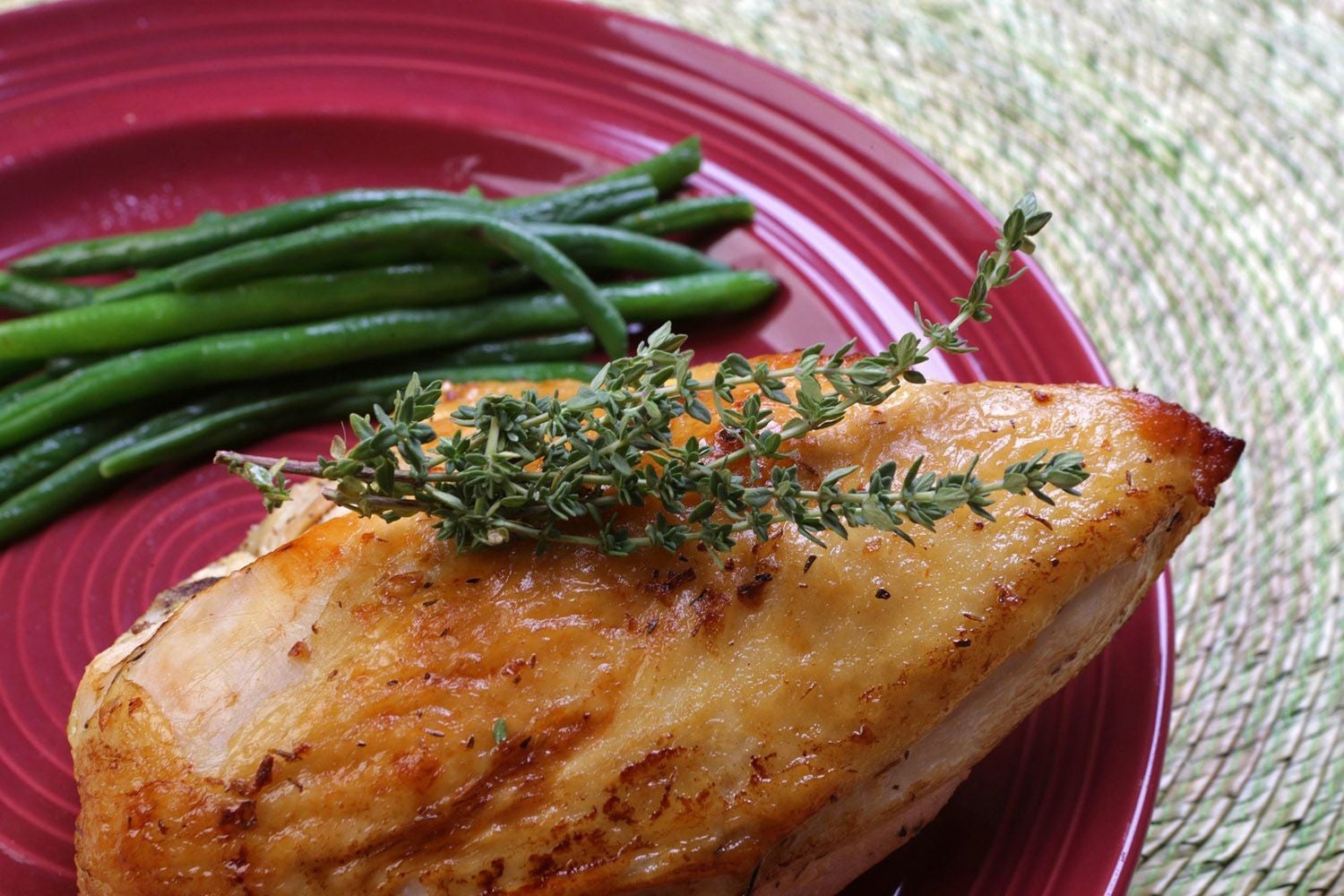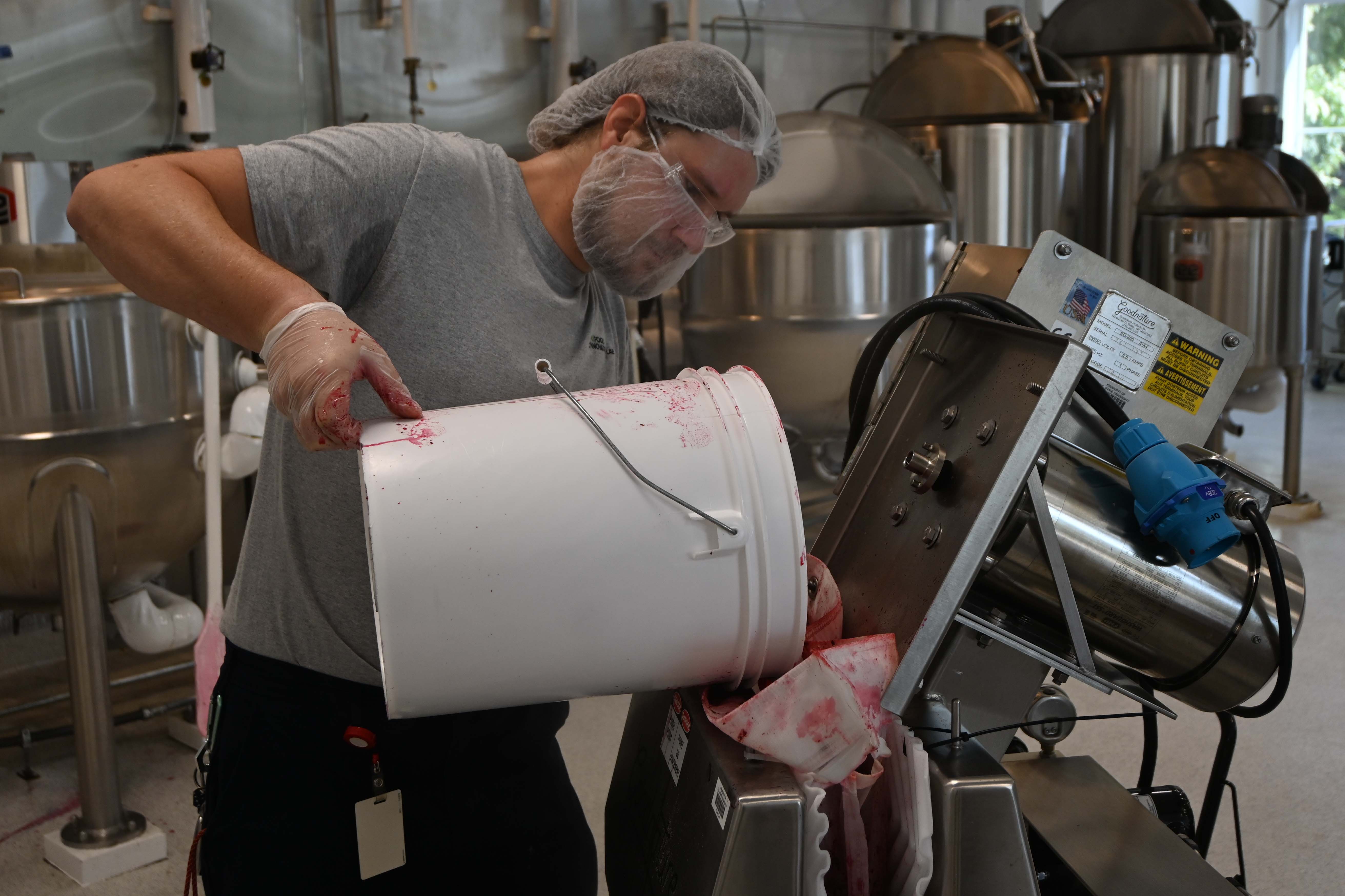Thyme to spare: Great recipes for cooking with thyme
Published 2:54 am Tuesday, October 14, 2014

- Thyme has abundant uses, such as in this Mediterranean Baked Chicken. (Cristina Fletes-Boutte/St. Louis Post-Dispatch/MCT)
By Daniel Neman
St. Louis Post-Dispatch
To every thing there is a seasoning, and a thyme to every purpose under heaven. It says so in the Good (cook)Book.
So thyme, clearly, is on my side — even though thyme and tide wait for no man. Thyme flies like an arrow — on a thyme line! … and it is so abundant that you can save thyme in a bottle.
I’ve got a million of ‘em.
Thyme is as essential as parsley, sage and rosemary. It has to be one of the most popular spices in this country and is certainly one of the most useful. It grows anywhere that gets some decent sun and has a warm summer, and it goes well with practically anything you want to put it on: poultry, lamb, beef, fish, mushrooms, onions, cheese and so much more. You can use it to flavor vinegar, and sometimes bees use its pollen to make thyme-flavored honey.
With so many potential ways to use thyme, I decided to try a nicely representative three. One chicken dish, one beef dish, one vegetarian. One way is as a marinade, one a sauce and one a flavoring.
Because thyme originated around the Mediterranean Sea, I decided to stick with recipes that at least had echoes in southern Europe. Thyme can be used in any sort of dish from anywhere, but herbs are generally a most natural fit with food from the region where it first grew wild.
For that reason, I decided to call my first dish Mediterranean Baked Chicken. It is the easiest and most basic of the dishes I made. I took a well-known Greek dish and tweaked it by taking out some of the Greece and adding a bit of France. The result, I suddenly realized, is not dissimilar to a very familiar and popular shortcut that busy cooks use to make dinner.
They marinate their chicken in bottled salad dressing. I more or less marinated mine in a homemade salad dressing. Obviously, I think my way is better, and it is not significantly harder than buying dressing at a store. It’s faster, too _ if you have to go to the store to get the dressing.
I made a simple vinaigrette of olive oil, lemon juice (that’s from the Greek dish), garlic, Dijon mustard (that’s the part from France), thyme and salt. Then I plopped a couple of bone-in chicken breasts into it — the bones add much more flavor while it cooks, but you could use skinless and boneless if you wish — and let them marinate overnight.
The next day, I just baked them in the oven. They would have been great grilled, too, or pan-fried if they were boneless and skinless. But I wanted the dish to be the most tender and juicy it could be, so into the oven it went.
For my second dish, I started with the idea of serving duxelles with steak. Duxelles is an intensely flavored, traditional French mixture of sauteed minced mushrooms and shallots. Thyme happens to go blissfully well with both mushrooms and shallots, so it is often included in duxelles.
Because I wanted to serve my duxelles with steak, I decided to add red wine to the mixture and let it all nearly evaporate away, so that all that was left is the wine’s rich essence. And because nothing, absolutely nothing, goes better with mushrooms than cream, and vice versa, I decided to add just a bit of cream at the end.
Not too much cream, because I didn’t want it to be too creamy, I didn’t want it to be a sauce. I wanted to maintain the distinctive coarse-paste texture of duxelles.
Finally, I love the taste of thyme with white beans, so I went in search of a recipe making use of both ingredients. I found one by Jacques Pepin, a celebrity chef before chefs were celebrities. He calls it a ragout, which would technically be a stew, but he also admits it is really just a carefully seasoned, partly pureed pot of plain white beans.
Most bean recipes call for meat for flavoring, as this one did, but I wanted to make it vegetarian (in fact, my version is vegan). So I took Pepin up on his suggestion of using aromatics — I used carrots, celery and a red bell pepper — to create a full-flavored, protein-rich veggie dish.
It could be either a side dish or a main course, and it is the sort of food you will want to make over and over when the nights become chilly. You can make it quickly with canned beans, if you want, or spend less money and hurry up the cooking process at least a little bit by soaking the beans overnight. I chose the more extended way to do it, by not soaking the dried beans first and simmering them for longer.
It’s definitely worth the effort, if you have the thyme.
Mediterranean
Baked Chicken
Yield: 4 servings
• 2 large bone-in chicken breasts
• 1/4 cup olive oil
• 2 tablespoons fresh lemon juice
• 1/2 teaspoon Dijon mustard
• 1 teaspoon salt
• 1/4 teaspoon dried thyme
• 1 clove garlic, minced
Note: This recipe marinates overnight.
1. Pat chicken dry with paper towels.
2. In a large bowl, whisk together oil, lemon juice, mustard, salt, thyme and garlic until thoroughly mixed. Add chicken breasts and turn in bowl until coated on all sides. Cover and refrigerate overnight.
3. Preheat oven to 450 degrees. Shake excess marinade off chicken breasts and place skin-side up in a baking pan.
4. Bake 30 to 35 minutes, depending on the thickness of the breasts.
Per serving: 230 calories; 12 g fat; 2.5 g saturated fat; 80 mg cholesterol; 29 g protein; no carbohydrate; no sugar; no fiber; 155 mg sodium; 15 mg calcium.
Creamy Duxelles
Steak Sauce
Yield: About 1 cup
• 1 tablespoon butter
• 1/4 cup minced shallots
(about 2 small shallots)
• 1/2 cup red wine
• 8 ounces mushrooms, minced
• 1 teaspoon fresh thyme
or 1/4 teaspoon dry thyme
• 3 tablespoons cream
1. Melt butter in a small skillet over medium heat; add shallots and saute until translucent, about 3 minutes. Stir in red wine and cook until wine is almost evaporated.
2. Add mushrooms and thyme, and season liberally with salt and pepper. Cook until mushrooms release their liquid and it evaporates. Stir in cream and cook until slightly thickened.
3. Serve alongside or on top of steak or hamburger.
Per serving: 25 calories; 2 g fat; 1 g saturated fat; 6 mg cholesterol; 0.5 g protein; 1 g carbohydrate; 0.5 g sugar; no fiber; 5 g sodium; 5 mg calcium.
Ragout of White Beans
Yield: 10 to 12 servings
• 1 pound dried Great Northern beans or 7 (15-ounce) cans, see note
• 11/2 teaspoons salt, plus more to taste
• 1 tablespoon olive oil
• 11/2 cups chopped onions
• 2 carrots, sliced
• 1 rib celery, chopped
• 1/2 red or green bell pepper,
chopped
• 3 tablespoons peeled and thinly
sliced garlic (5 large cloves)
• 2 teaspoons minced fresh
thyme or 1 teaspoon dried
thyme, crumbled
• 1/4 teaspoon black pepper
• 2 tablespoons chopped parsley,
for garnish
Note: If using canned beans, skip to step 3.
1. If you want to, soak the dried beans overnight in water that covers them by a couple of inches (this will make them softer and faster to cook, but is not necessary).
2. Drain the beans if you have soaked them or wash the dried beans and put them in a large, 5- or 6-quart pot. Add 6 cups of water if you soaked them or 8 cups of water if you did not, plus the salt. Bring to a boil and simmer gently, partially covered. After 40 minutes of cooking, taste several beans to check for doneness — you want them all to be tender to the bite but not mushy. Simmer longer if necessary.
3. If using canned beans, put them in a large, 5- or 6-quart pot and bring to a simmer.
4. While the beans are cooking, heat the oil in a 10-inch frying pan. Stir in the onions, carrots, celery, red or green pepper, garlic, thyme and black pepper and cook over moderately low heat for about 10 minutes, stirring and tossing frequently until the vegetables are soft. Set aside.
5. When the beans are nearly tender, stir in the sauteed vegetables and return to a simmer. Cook, partially covered, over low heat, stirring occasionally, for about 20 minutes or until the beans are fully cooked and soft.
6. Remove from heat. Strain or ladle out any liquid covering the beans (save it for soup). For a thick and creamy texture, remove a cup of beans and puree them in a blender or food processor, or use an immersion blender for a few seconds in one small area of the bean pot to make a small amount of puree. Stir the puree through the rest of the beans. Taste and adjust seasoning.
7. Just before serving, sprinkle the chopped parsley over the beans.
Per serving: 140 calories; 1.5 g fat; no saturated fat; no cholesterol; 8 g protein; 24 g carbohydrate; 1.5 g sugar; 8 g fiber; 305 g sodium; 80 mg calcium.





